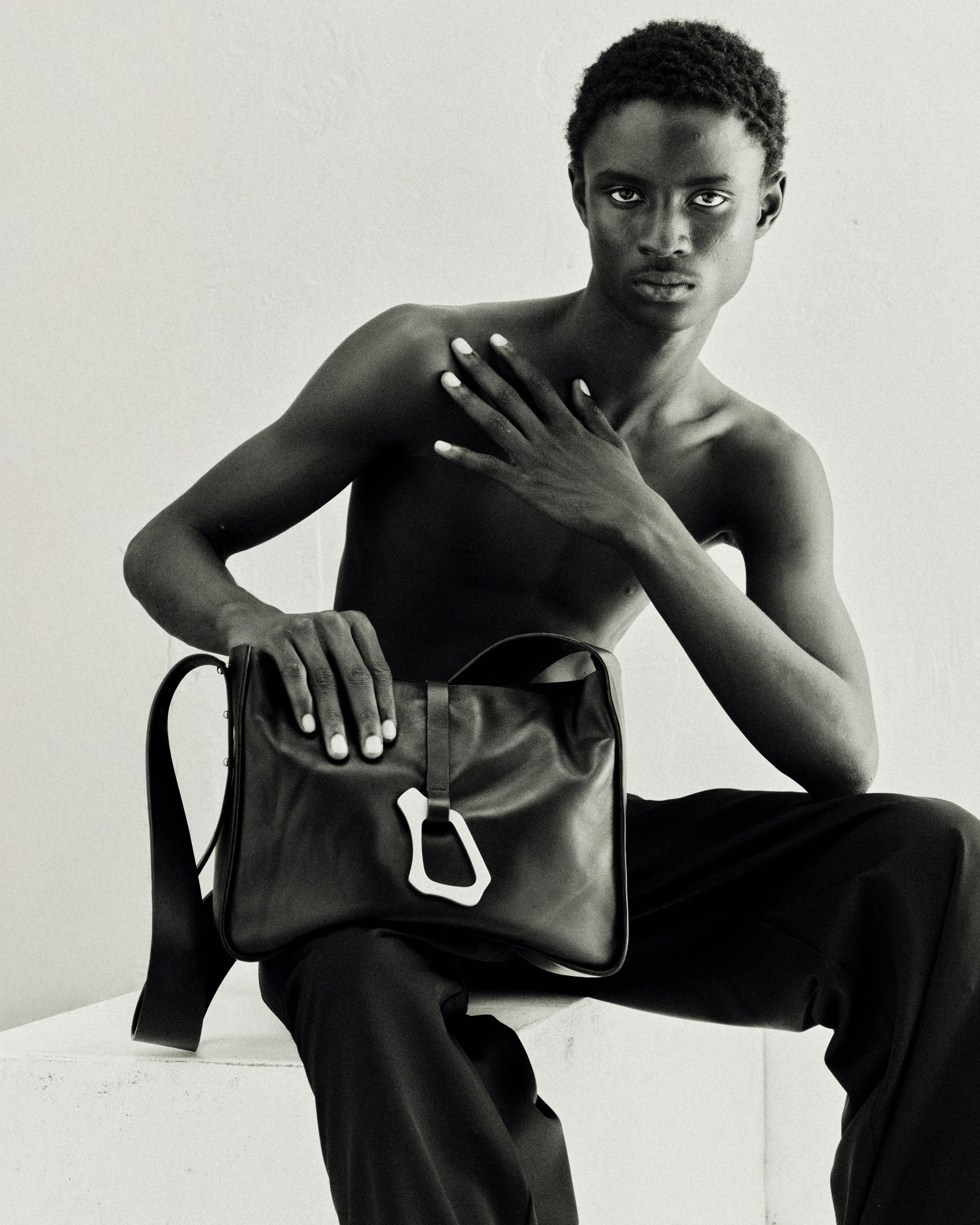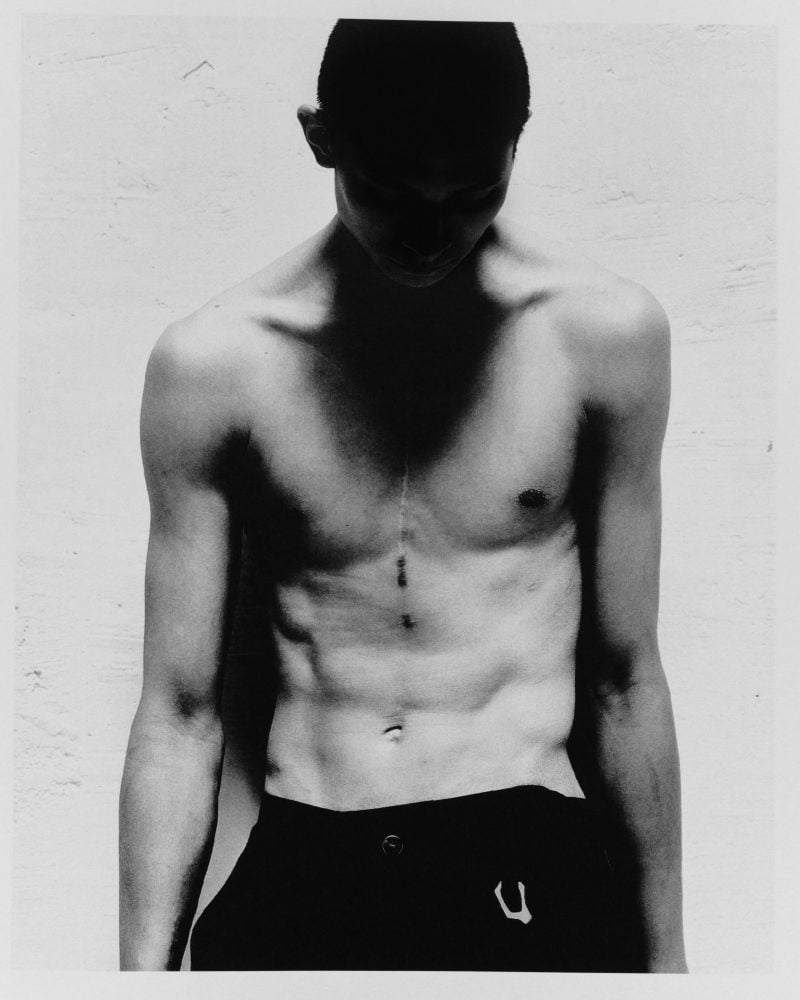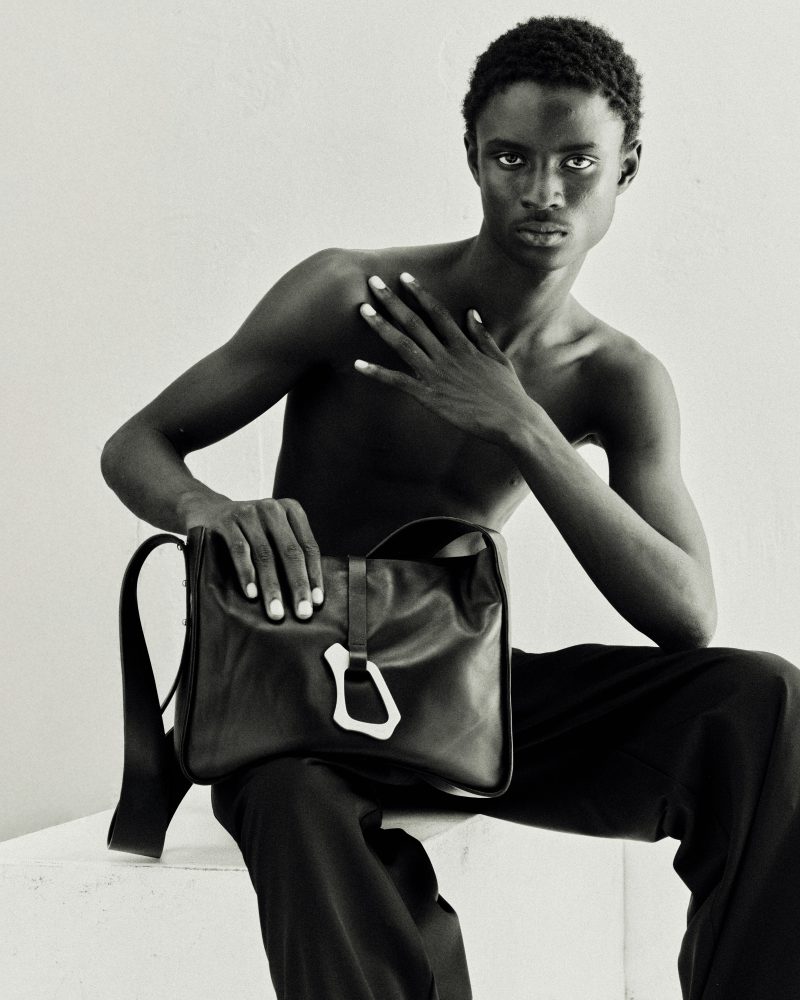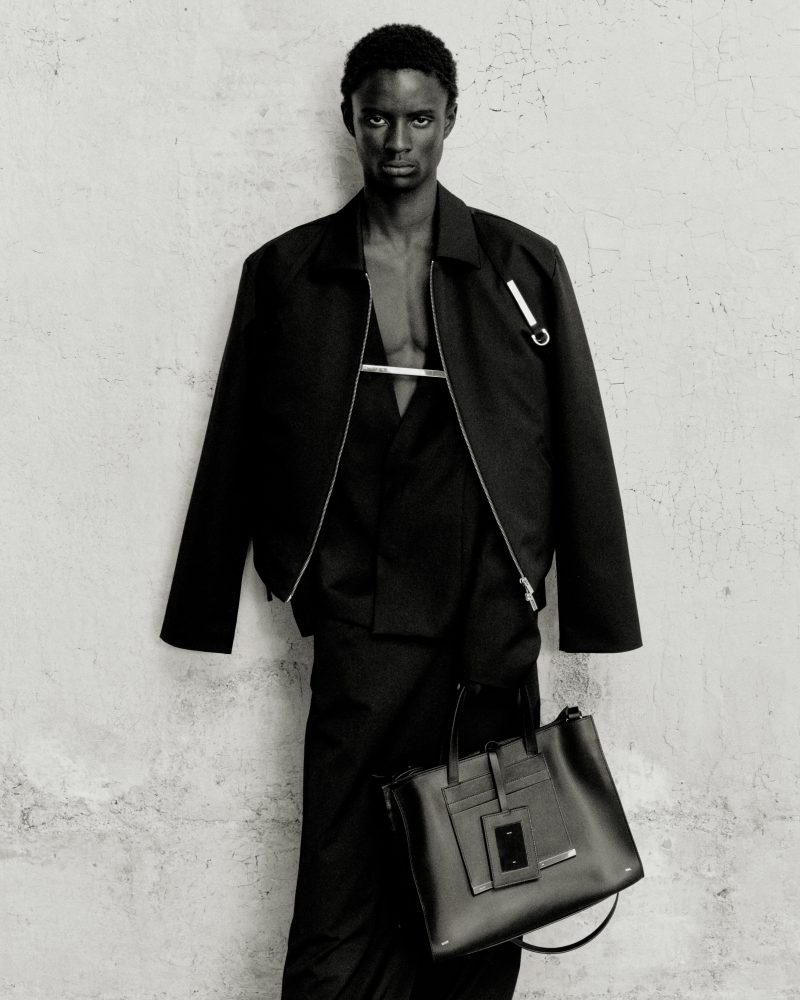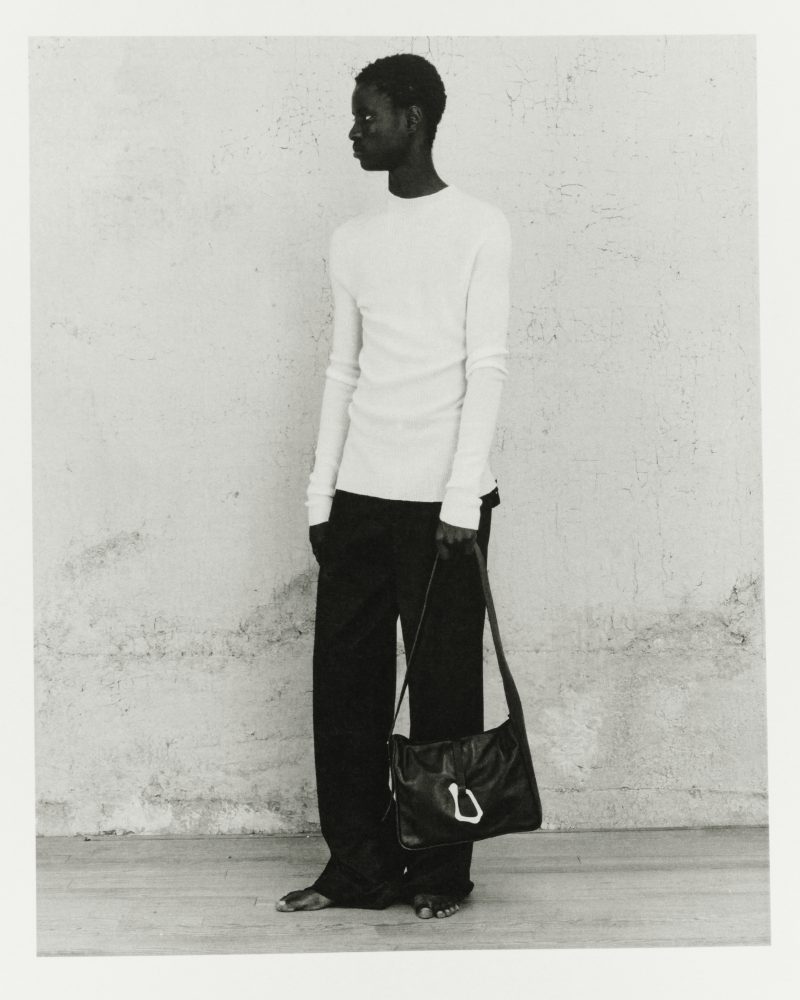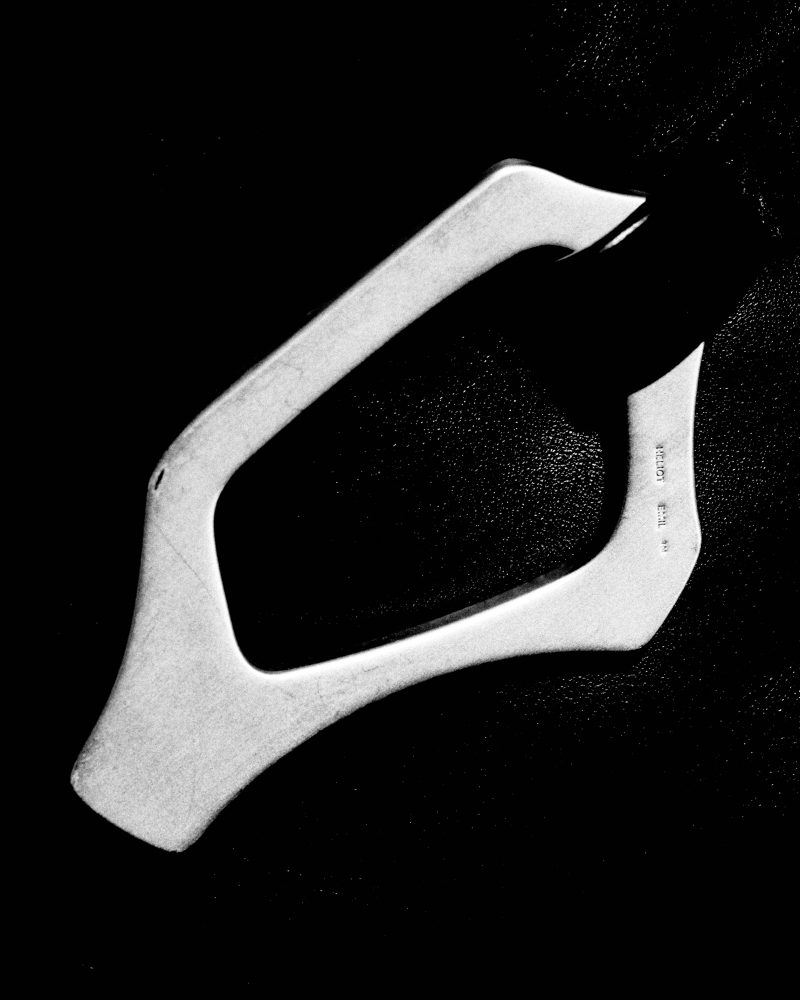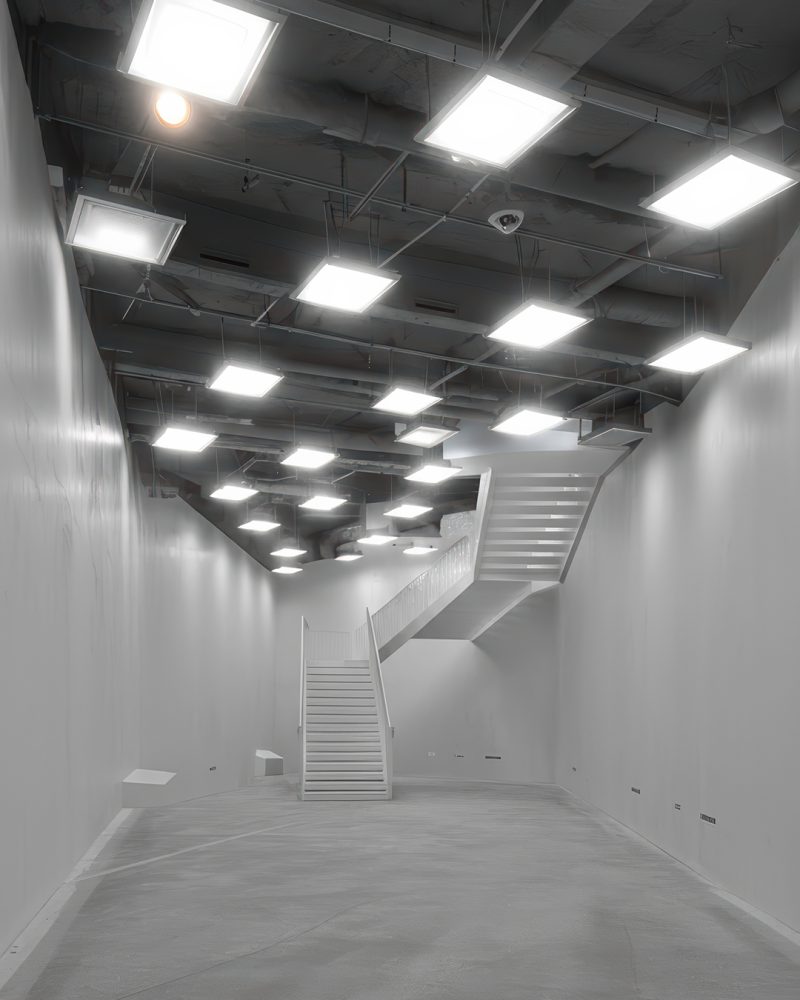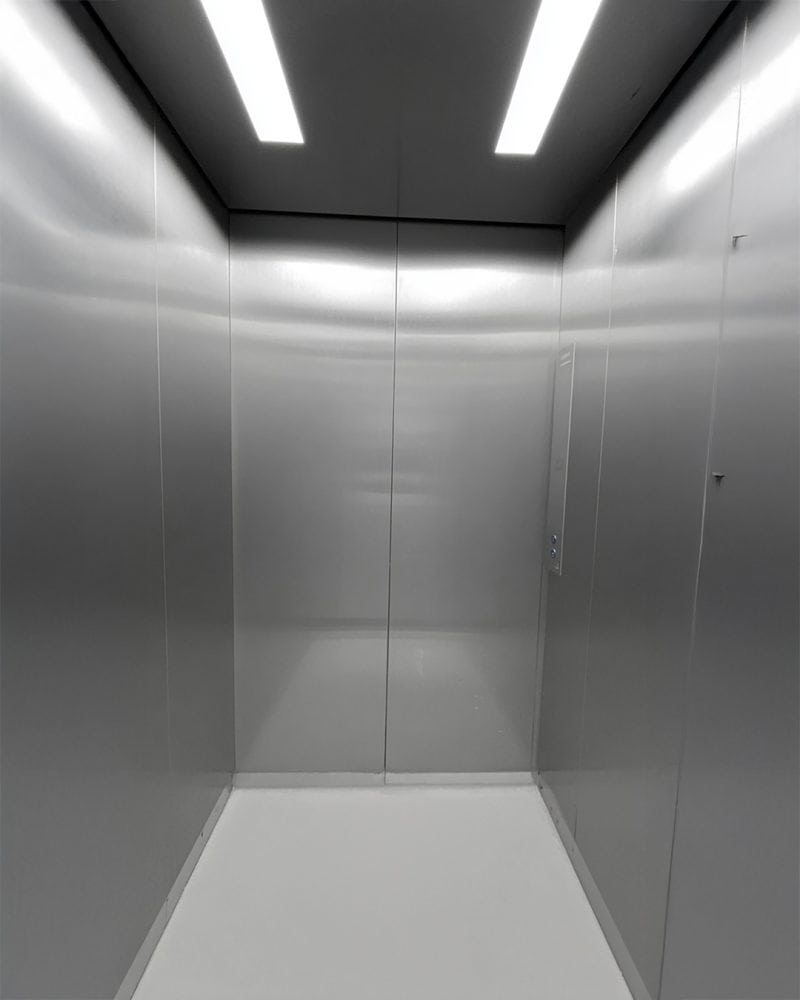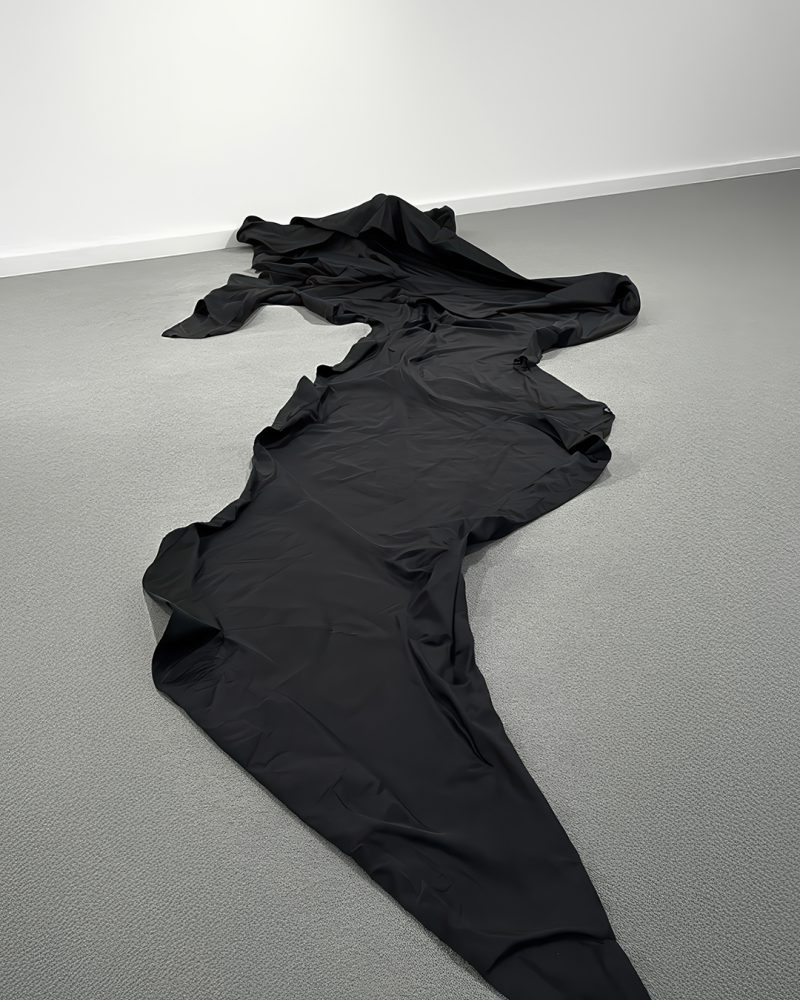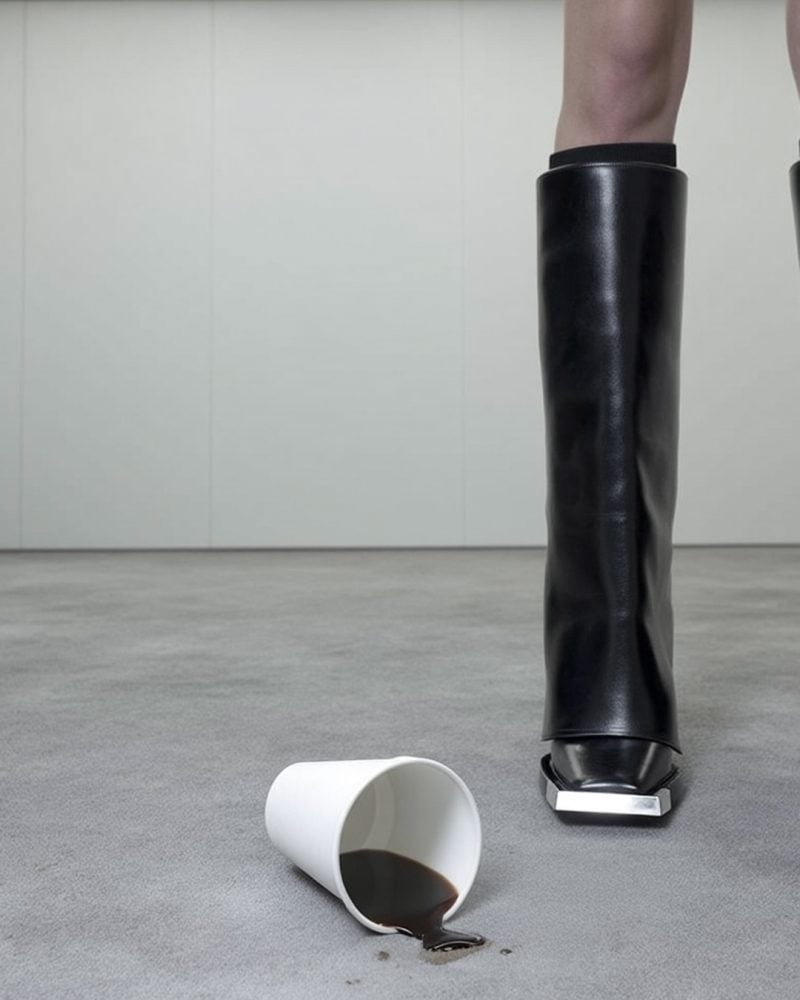In EIGENGRAU, HELIOT EMIL’s AW25 collection, fashion becomes a system of communication rather than a mere wardrobe. Julius Juul explores the liminal zone where the eye perceives what doesn’t exist, translating that tension into technical tailoring, modular construction, and surfaces that shift with light. Familiar typologies are stretched, stripped back, or skewed to invite productive disorientation—echoed in campaign images of corridors and stairwells that feel at once plausible and impossible. Moving from a strictly dystopian register toward the dreamlike, Juul frames clothing as tools for inhabiting inner states as much as external space. Through the Dream Archive, community-submitted dreams fold into the brand’s universe, transforming the collection into a shared mythology.
RITAMORENA ZOTTI: Your background has always intertwined design, image, and communication. How have these experiences shaped your idea of fashion and the vision you carry forward with Heliot Emil?
JULIUS JUUL: For me, fashion was never just about garments. It was always the intersection of clothing, image, and narrative. I’ve always been drawn to the total universe, not only what you wear, but how it’s presented, how it feels, how it communicates. That combination has shaped HELIOT EMIL into a holistic project where the clothes are just one part of the experience. My vision is to keep pushing fashion as a system of communication, a way of translating emotions, thoughts, and ideas into physical form.
The title of the AW25 collection, “EIGENGRAU,” comes from a color that does not exist in the external world.
RZ: What fascinates you about this perceptual space between the real and the imaginary, and how did you translate it into forms, materials, and silhouettes?
JJ: Eigengrau is a reminder that perception creates its own realities. I was fascinated by the idea that something which doesn’t exist externally can still feel so tangible. That tension informed the silhouettes, sharp, architectural forms interrupted by soft distortions, surfaces that change with light, materials that look solid but move with fluidity. It was about translating something ungraspable into a tactile, wearable dimension.
RZ: The campaign evokes impossible yet familiar scenarios — endless corridors, buildings without exits. How did you work with the idea of disorientation and familiarity, two opposing poles that meet in this collection?
JJ: Disorientation and familiarity are emotions I think we all carry. The spaces we created are rooted in reality. Corridors, staircases, buildings, but they’re twisted just enough to feel unsettling. The garments mirror this concept in recognizable stables distorted, stretched, or stripped back until they become something else. The intention was to make people question what they see, to recognize themselves in something unfamiliar.
RZ: Heliot Emil has always been associated with an architectural and functional aesthetic. How does “EIGENGRAU” converse with this visual language, and in what ways does it push beyond the brand’s established codes?
JJ: The collection stays true to our architectural foundation with technical tailoring, modular construction, and industrial materials. But “Eigengrau” pushes further into the psychological dimension. We wanted to blur the line between utility and imagination. For example, a jacket might have functional straps or technical fastenings, but the proportions or placements are deliberately disorienting. It’s still industrial elegance, but with an added layer of the surreal.
RZ: The concept of “memories never lived” feels very cinematic. Were there specific visual works, films, or cultural references that directly inspired the imagery of the campaign?
JJ: I was inspired by filmmakers who create spaces between dream and reality. Guys like Tarkovsky, Antonioni, Lynch. Their work often leaves you questioning whether what you saw was real or imagined. We also drew from architecture, especially structures that feel both monumental and alienating. These cultural references became a backdrop, but we always aim to reframe them into our own universe rather than replicate.
RZ: Your aesthetic is often described as futuristic and dystopian. With this collection, a more dreamlike and surreal tone seems to emerge: what led you to explore this transition?
JJ: The dystopian lens has always been part of my vocabulary, but I didn’t want to be trapped in it. Eigengrau allowed me to step into something more introspective. Dreams are just as futuristic as dystopias, they show us what could exist, even if only in our subconscious. This collection is less about warning and more about exploration, about opening new doors for the brand.
RZ: The “Dream Archive” gathers dreams from the community, turning the collection into a collective experience. How important is it for you to involve the brand’s audience in a creative process that delves into the unconscious?
JJ: For me, HELIOT EMIL is never a one-way communication. The audience is part of the brand’s life. By collecting dreams, we’re opening the process, allowing people to contribute fragments of their subconscious that we can weave into the narrative. It creates a collective mythology. I find it beautiful that a fashion collection can become a shared dream, rather than just my own vision.
RZ: Fashion and dreaming share the idea of transformation. Do you see the garments in “EIGENGRAU” as tools not only to inhabit the external world but also one’s inner states?
JJ: Yes, absolutely. Clothing has always been about transformation. With “Eigengrau”, I wanted to push that beyond identity into perception. These garments are not just uniforms for the outside world, but triggers for internal states, protection, fragility, distortion, elevation. Wearing them becomes a way of inhabiting your own subconscious, as much as inhabiting the external environment.
RZ: If you close your eyes and think of Heliot Emil ten years from now, what kind of “EIGENGRAU” do you envision for the brand’s future?
JJ: Ten years from now, I hope HELIOT EMIL is still operating in that “liminal space” between real and imagined, utility and dream. I don’t want the brand to be fully defined. The vision is to keep expanding into new dimensions. Whether that’s architecture, film, performance, or other mediums. My “Eigengrau” for the future is a brand that continues to inspire setting new standards for innovation within fashion and to challenge perception while staying deeply connected to reality.
